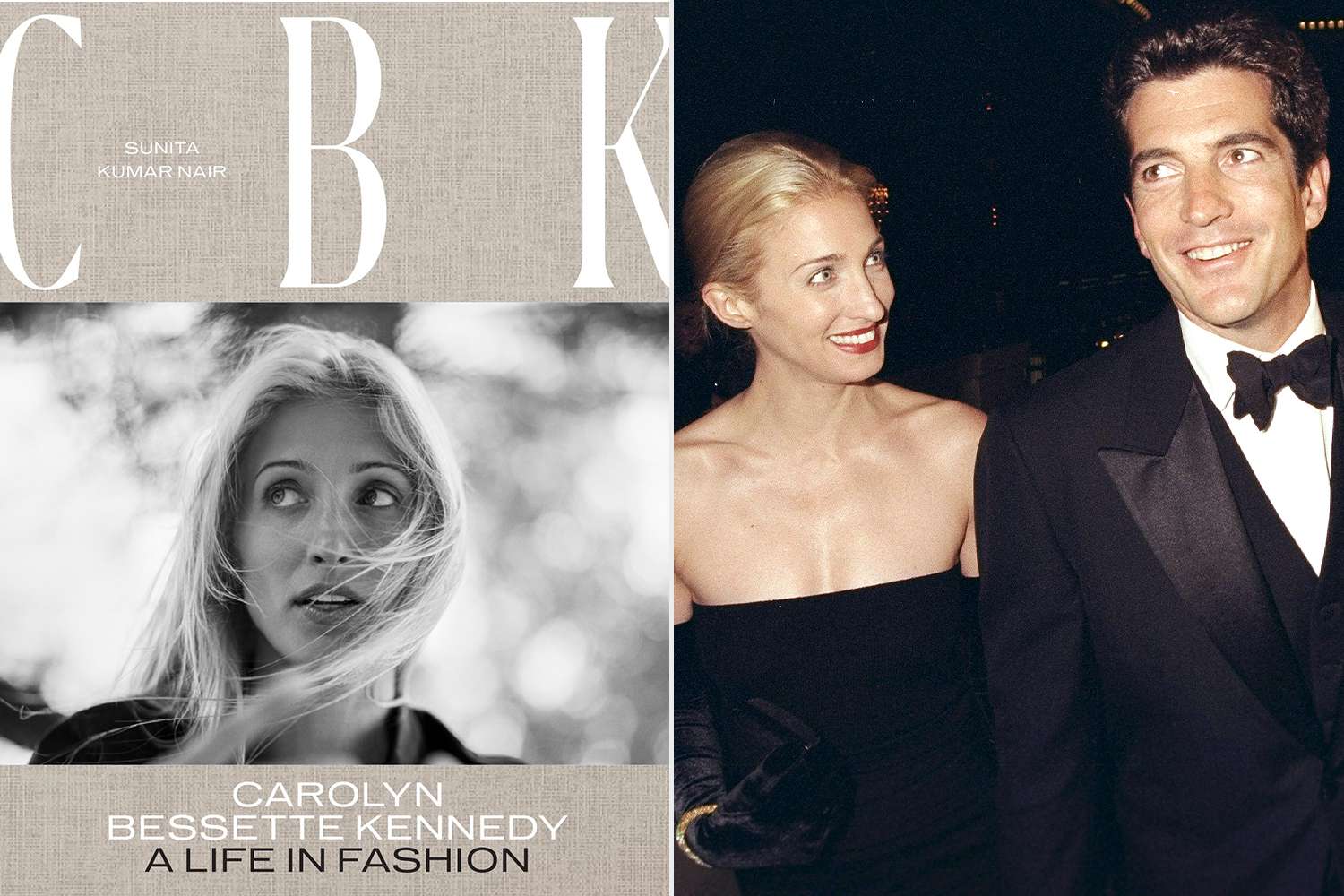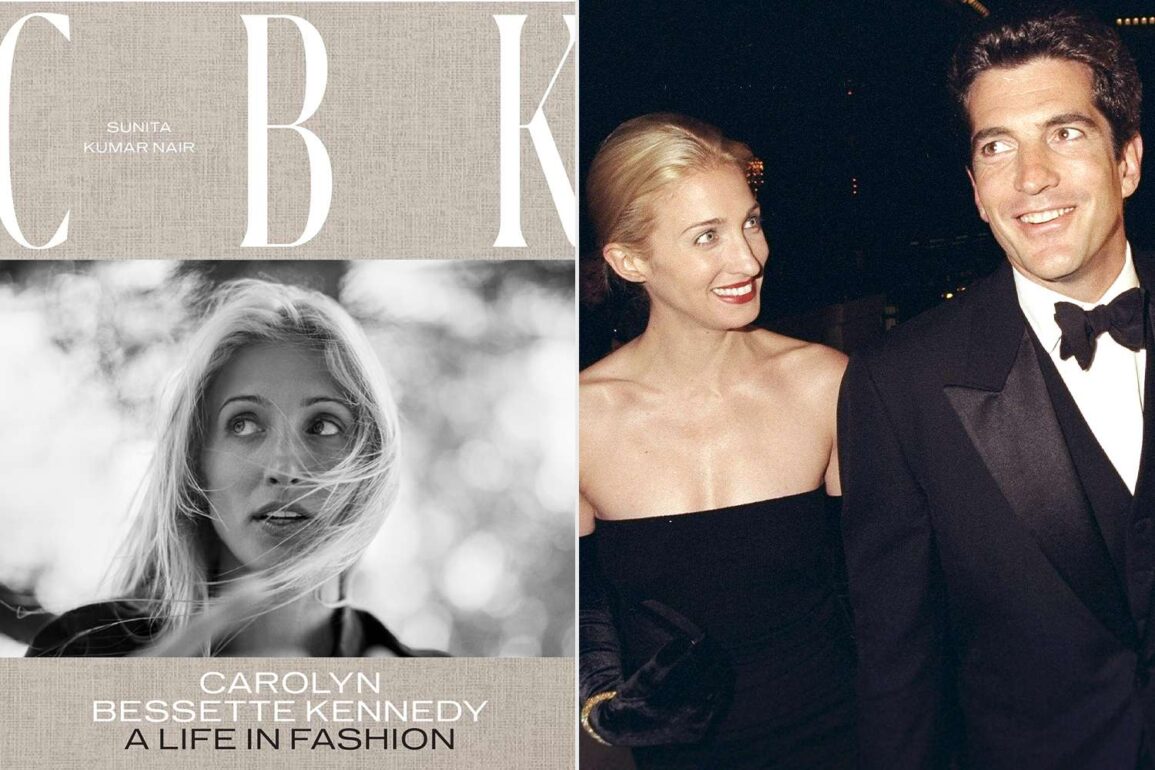
Carolyn Bessette Kennedy was — and will always be — a style icon.
The late fashion publicist and wife of John F. Kennedy Jr. was often emulated in the 1990s (and still is today) for her keen eye for style — she knew how to take a simple pair of jeans and button-down shirt and make them look effortlessly cool.
Bessette Kennedy — who worked for Calvin Klein before marrying JFK Jr. — seamlessly nailed her looks for each event without the help of a stylist or assistant. She was particular about her style, staying away from logos and bold prints, but also wasn’t afraid to go for color-mixing that might have been a bit out of the norm (she loved black and beige!).
In CBK: Caroline Bessette Kennedy: A Life in Fashion, author Sunita Kumar Nair takes a closer look at Bessette Kennedy’s style before her untimely death at age 33 in 1999 (she died in a plane crash alongside her sister, Lauren Bessette, and husband, JFK Jr.).
Richard Corkery/NY Daily News Archive via Getty
Though she’s gone, Bessette Kennedy lives on through her fashion legacy, which Nair describes as “timeless.”
“It transcends time,” Nair tells PEOPLE. “What she wore in the ’90s isn’t dated in any way, and we see that there are pieces that she wore that still appeal to us.”
As for her aversion to logos and prints, Nair says it was indicative of the time.
“Not many brands did that and if they did, she would remove them,” she says. “It’s an indication of her confidence as a woman — she didn’t need a label that is visibly identifiable on her clothing to define who she was and was a crutch to support her style. There is a discipline to her approach and not wearing logos was one of them.”
Perhaps one of Bessette Kennedy’s most memorable looks, though, was her wedding dress that she wore to walk down the aisle in 1996. Her simple but elegant Narciso Rodriguez gown put the designer — whom she’d worked with at Calvin Klein before he launched his own label in 1997 — on the map.
“It was bold because the silhouette was radically different,” Nair says of Bessette Kennedy’s dress. “In fact, it’s one of the best examples of how Carolyn would wear what she felt comfortable in. She always wore slip dresses but now she chose to wear it for her wedding dress.”
Evan Agostini/Getty
Here, an exclusive excerpt from Nair’s book, CBK: Carolyn Bessette Kennedy: A Life in Fashion.
Not many can detail a life in front of the lens and what that entails except those who have firsthand experience of it. This was the case for John Jr., Jackie Kennedy, and Lee Radziwill. As Shakespeare famously fancied, “Some are born great . . . and others have greatness thrust upon them.”
Gingerly walking down the rickety steps of the church, John Jr. gallantly clasping her hand, her face flushed with euphoria and surprise at the princely gesture, Carolyn was the Camelot bride. It was the stuff of dreams to some women and men and to others, it was the shattering of a fantasy. Women particularly either adored Carolyn or didn’t. Hers was not a conventional beauty, like perhaps Lee was, but she had a similar packaging to Jackie, who merely stood in her magnetic field while most were inexplicably drawn to her or repulsed. Before her wedding day, Carolyn had an intrinsic understanding of who she was, clear and consistent in her style choices. Friends often described her as vivacious, warm, kind, funny, and unpredictable, but more than anything she was “a force.” But as Mrs. John Kennedy, she was thrust into the spotlight, with all eyes on her—be it kind or not. Lee stepped in and was a valuable mentor to her; if anyone understood the media slot machine and its incalculable tendencies, it would be her.
Evan Agostini/Getty
Lee and Jackie generally experienced a respectable distance between camera and privacy in the heyday of their fame, but by the nineties, the lines became blurry and there were some new rules—or no rules—to how far the paparazzi could go. Being armed meant “putting one’s best face on,” no matter what, was essential. Running out to get milk or walking the dog required care and attention, just in case. In Lee’s words, “put on a good coat or a good jean to show you care when you step out.” Carolyn’s only real downtime was behind closed doors. John Jr. and Lee were matter of fact on this point; it was the rent you paid for the privileges of their life, a lease they had accepted as a family a long time ago. Gifts were graciously accepted but never sought for. If John Jr. was offered a free flight on a private jet from anyone other than a close friend, he would politely decline, knowing it would spoil the fruit. A close friend explained this further, saying, “John would never take a free ride; he would book economy on commercial flights to preserve and avoid judgment.”
Carolyn was a PR girl and knew, to all intents and purposes, how the beast worked. Some friends and colleagues had theorized that she wore black or similar shaped outfits that covered her body, or even repeated looks, as tactics to evade the cameras and consequent commentators. This may true to a degree, but Carolyn knew what worked for her better than anyone. She had tried and tested a capsule formula of the right shirt, coat, and dress which rendered the same results years before and had absorbed notes from her mother. She would now use this as a foundation for her uniform. When style and fashion make a cohesive, believable look—one that makes another woman think, If I get that coat I will look like her—that is fashion alchemy working at its best. Carolyn always looked and felt like herself, ticking the rule number one box and that is something money can’t buy. She didn’t have a stylist or an assistant, and she did her own research, prepping for each event. Lisa Lawrence, who was the PR director for Jean Paul Gaultier at Aeffe USA, remembers the call from Carolyn as considerate (Carolyn remembered that Lisa would have just come back from the shows in Europe and asked her about them) and professional (she made the call, methodically tagged all the lookbooks, and communicated everything clearly), and was gracious and kind (all the samples were returned dry-cleaned along with a hand-written thank-you note and flowers).
Abrams
Pretty was not a compliment but an insult in the Lee rule book. The word is used so often to relay a multitude of opinions, but in reference to a look, it meant dull and plain, like the rest. Pretty meant prints, and Carolyn, including Jackie and Lee, had an overall aversion to them. If she did choose a print, you knew it was a considered purchase because they made rare appearances. Showing labels in any way was also a no-no. Carolyn had already made this part of her fashion doctrine, but Lee put the seal on it. Lee and Carolyn were demons about fit and would often deliberate on the art of a good one. Carolyn would ruminate on every detail—the cuff, hem, arm hole, length—her exacting eye always on the go. She often recruited her designer friends to her North Moore Street apartment to make last-minute alterations for formal evenings.
Adapted excerpt from the new book CBK: CAROLYN BESSETTE KENNEDY: A LIFE IN FASHION by Sunita Kumar Nair, published by Abrams
Text Copyright: © 2023 H11, Inc.
This post was originally published on this site be sure to check out more of their content.









